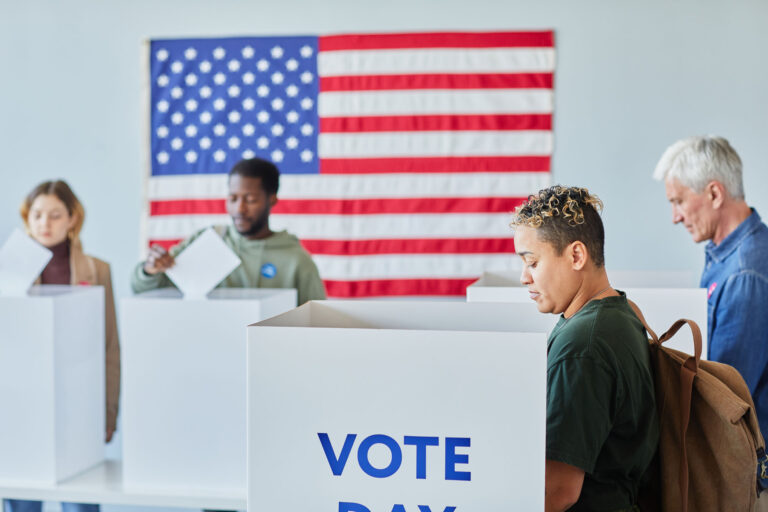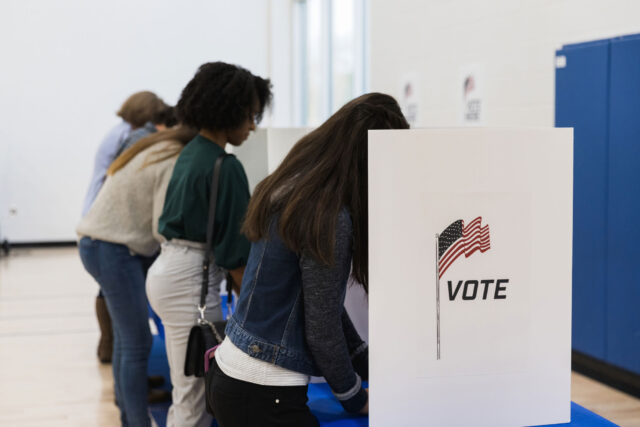The red ripple that resulted in a closely divided Congress fell short in blue California. Repeating the trend established 14 years ago, Democratic candidates have won or are leading in every statewide office, focusing our election-night drama instead on state propositions. Not only do these measures play an outsized role in making policy, they also generate enthusiasm about casting ballots and excitement about election outcomes. This is why initiative contests usually matter so much in California. But this year, voters were largely nonplussed about the crop of citizens’ initiatives. While they still believe in the direct democracy system, they also want changes in its future use. The November PPIC Survey points to problems and solutions with great clarity after a disappointing year.
Generally speaking, the citizens’ initiative process remains highly regarded by voters, even while none of this November’s ballot measures struck a chord. When asked in our November survey about the best way to address the most important problems facing California today, two in three California likely voters (66%) say that “California voters should decide what to do by bringing initiatives to the ballot box and passing them.” By contrast, just one in three likely voters say that “the governor and state legislature should decide what to do and pass state laws.” Our polling earlier this year also reaffirmed a long pattern of glowing reviews for citizens’ initiatives.
Today, majorities across partisan groups (59% Democrats, 77% Republicans, 64% independents) choose the citizens’ initiative as their preferred approach to tackling the most important issues facing the state. Majorities of likely voters across the state’s regions and age, education, gender, income, and racial/ethnic groups hold this view.
Ironically, the November election results point to the central role of the legislature and the governor—and not citizens’ initiatives—in addressing some of the important problems facing California today. A majority of November’s voters supported Proposition 1 (abortion rights constitutional amendment) passed by the legislature this summer and Proposition 31 (prohibits some tobacco sales), which was a referendum on a state law passed by the governor and legislature in 2020. Voters rejected four of five propositions that were generated through the citizens’ initiative process this year—Propositions 26, 27, 29, and 30 and supported just one that flew under the radar—Proposition 28.
It appears that California likely voters have reached consensus that citizens’ initiatives are falling short. In fact, despite general support for citizens’ initiatives, past PPIC polling has surfaced many criticisms as well. This fall, 86% of likely voters agree that “citizens’ initiatives on the state ballot usually reflect the concerns of organized special interests.” Just 13% disagree. Overwhelming majorities across partisan groups (84% Democrats, 87% Republicans, 86% independents), regions of the state, and demographic groups—including age, education, gender, income, and racial/ethnic groups—feel this way about citizens’ initiatives that make it to the state ballot.
California likely voters also overwhelmingly express a sense of bewilderment about ballot language. Eighty-seven percent of likely voters agree that “the wording of citizens’ initiatives on the state ballot is often too complicated and confusing for voters to understand what happens if the initiative passes.” Just 12% disagree. Overwhelming majorities across partisan groups (85% Democrats, 91% Republicans, 87% independents), regions of the state, and demographic groups feel this way. In this context, it is easy to understand why most initiatives fail—a no vote is the default in the face of uncertainty. This reaction leaves us to wonder how often policy proposals that voters actually favor end up failing.
Complaints about citizens’ initiatives go beyond who places items on the ballot and what they say. While most California likely voters are “somewhat satisfied” (58%) with the information available to voters about citizens’ initiatives on the state ballot, relatively few say they are “very satisfied” (11%). Three in 10 say they are “not satisfied.” Majorities of Democrats (65%) and Republicans (55%) and half of independents (50%)—along with majorities across the state’s regions and demographic groups—are “somewhat satisfied.” Small minorities across all of these groups are “very satisfied.” To clarify what happens if an initiative passes—as well as the role of special interests—it is likely that voters need to feel very satisfied with the information available to them.
What can be done? On the bright side, our survey points to strong consensus about improvements needed to the initiative process. Eighty-two percent of likely voters favor having the yes and no sides of citizens’ initiative campaigns participate in a series of televised debates. In the context of a fall election dominated by information from television commercials and election mailers, ballot initiative debates are indeed a rarity. Overwhelming majorities across partisan groups (79% Democrats, 85% Republicans, 86% independents), regions, and demographic groups support televised initiative debates.
We also find broad and deep support for a proposal to address concerns about the domination of special interests and the proliferation of confusing ballot language. Currently, 76% of California likely voters favor having a commission that would hold public hearings on initiatives and then make ballot recommendations in the official voters’ guide. When we asked this question earlier this year, 77% supported this initiative reform. Today, strong majorities across partisan groups (84% Democrats, 65% Republicans, 72% independents), regions, and demographic groups are in favor of having an independent citizens’ initiative commission.
As the books are closing on a contentious election cycle, we find broad consensus around California’s system of direct democracy: the inherent value of citizens’ initiatives, their current shortcomings, and several potential improvements. While some recent reforms have occurred—such as connecting the legislative and initiative processes, and increasing public disclosure of the major funders of initiatives—there is still much work to be done. Newly elected officials have two years to make changes before the next election cycle. Do the governor and legislature—and interested parties in the media as well as the private and nonprofit sectors—have the political will to make it happen? We should all be acting with a great sense of urgency to bolster confidence in elections—especially since the 2024 election is shaping up to be an historic test of American democracy.




